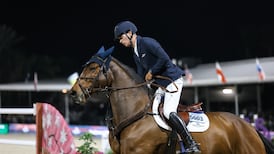SUNDAY’S league final wasn’t anything more than diverting but the occasion raised two issues worth consideration.
The first and more tangential is the extraordinary, self-perpetuating drive of Kilkenny. So much of what happens during the league, both football and hurling, frequently appears to be played out in a hall of mirrors, where no-one’s sure about the difference between substance and reflection.
Are teams going full tilt, experimenting or making sure not to show their hand ahead of a championship encounter with the same opponents? Is winning the competition a bit too flash for any manager wanting to approach through the long grass?
Just when we thought there was an irreducible value in league philosophy – avoiding relegation and maintaining a place for the following year in the higher division, along comes Jim McGuinness saying the All-Ireland champions might prefer being in Division Two. “It’ll give us a chance to roll out our annual plan easier than it has been this year and last year. We don’t really like the league to be honest.”
For whatever reason there is no hall of mirrors with Kilkenny, just the arena. They may sift through whatever data a league final yields but primarily they want to win it.
League medals
Neither do they like losing league finals. Not for them satisfaction at going the distance nor emollient noises about being happy with progress. After the 2011 All-Ireland final Brian Cody was grousing about the less than flattering coverage his team received after getting trimmed by Dublin in that year's league final.
Secondly, and more importantly from a general point of view, was the success of using Nowlan Park as the venue for the final. To get a home final, a county realistically has to be part of a home and away arrangement; otherwise finals just go into Thurles or the odd time, Croke Park if two Leinster teams are involved.
That it worked so well is a commentary on GAA stadium policy. Events work far more satisfactorily when the crowd fills the venue to near-capacity. There’s a better atmosphere and it looks more presentable on television. Had Sunday’s attendance been in Thurles, Semple Stadium would have been only half-full.
The Leinster Council have begun to release hurling championship matches to provincial venues and away from Croke Park and grounds like Nowlan Park and Wexford Park should be getting fixtures because they are ideal for the crowd size at all but the biggest matches.
It’s a readjustment in the centenary year of Croke Park to talk of matches being taken away from the GAA’s headquarters but fixtures should strictly find the level of the expected attendance.
It is certainly no spectacle for television viewers and probably those in attendance as well as players that an occasion like Saturday's All-Ireland under-21 football final in the Gaelic Grounds between Cork and Galway looked like it was being played behind closed doors.
Four seasons
That's not just Limerick's problem. Munster has four venues accommodating more than 40,000 and two of those can take up to around 50,000 and yet in the past four seasons there have been just two attendances that have (barely) breached the lower figure and you have to go back five years to find an attendance within touching distance of the higher mark.
The stadium policy has evolved to accommodate individual counties’ hopes of getting big matches, ideally ones in which they’re involved but if not, fixtures in search of neutral venues. Yet as the above figures indicate there simply aren’t enough big events to go around.
Cork is getting ready to construct a new 45,000 capacity Páirc Uí Chaoimh but inconveniently, in the context of rationalisation, the county attracts a disproportionate amount of the 40,000-crowd business in the province, having football and hurling teams regularly in finals.
Although Croke Park needs at least around 55,000 to feel vibrant, many of its attendances are smaller than that. Such is the standard of the stadium that for many followers considerations of comfort outweigh the attractions of atmosphere.
But it's also easy to understand why the 2002 Strategic Review Committee recommended that the GAA should also make use of a smaller stadium in the city.
It's ironic the size of the GAA's national stadium infrastructure has proved more useful in facilitating the IRFU's bid for a Rugby World Cup than it has in meeting the association's modern needs.
e-mail: smoran@irishtimes.com













